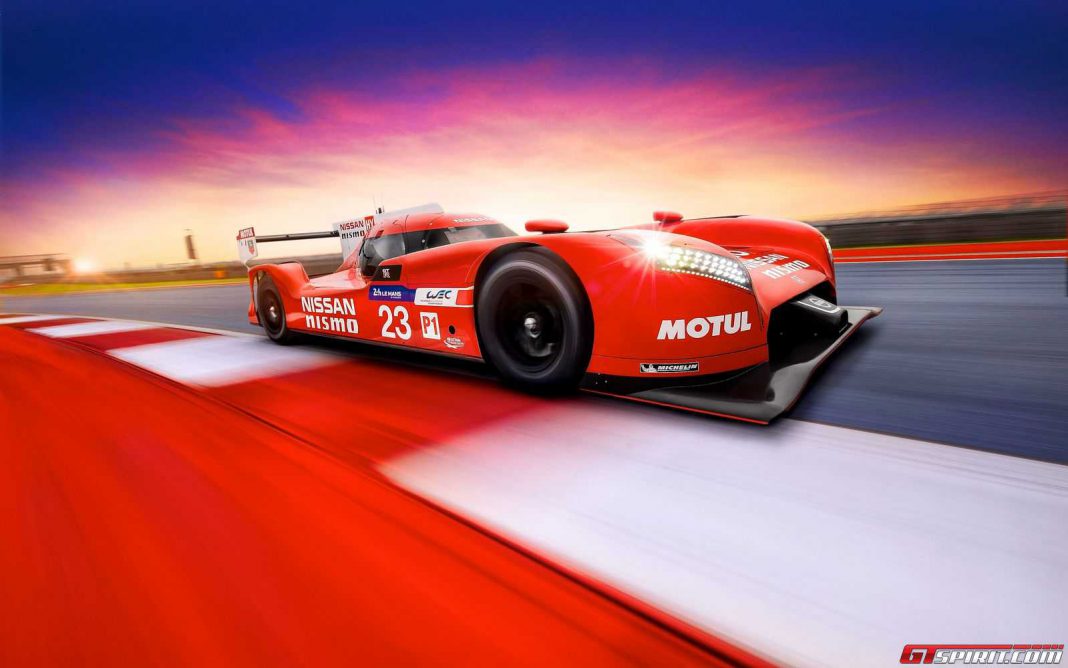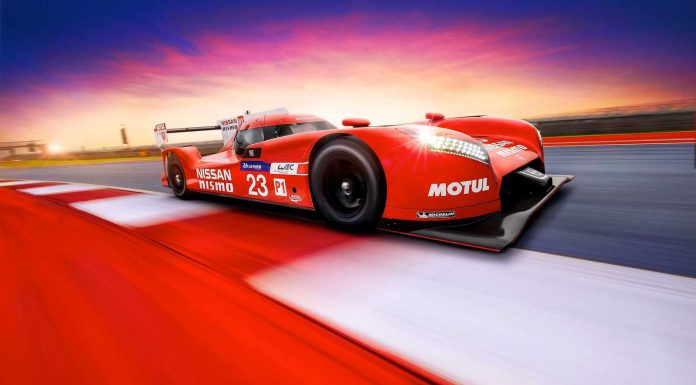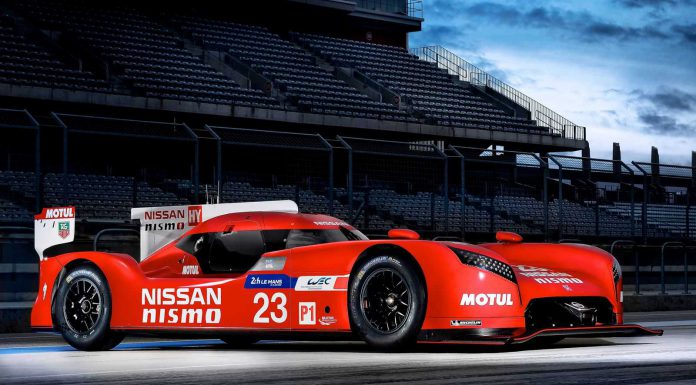The covers have just been taken off the 2015 Nissan GT-R LM Nismo and as the Japanese marque promised, it is unlike anything else in endurance racing. The car has been created to contest the 2015 World Endurance Championship in the LMP1 class and it will also race at this year’s 24 Hours of Le Mans.
As speculated, the Nissan GT-R LM Nismo is front-engined unlike other modern LMP1 entrants. Up front it uses a twin-turbocharged 3.0-litre V6 engine which believe it or not, actually powers the massive front wheels. That engine is mated to a kinetic energy recovery system (KERS) and theoretically, over 2000 hp can be achieved. According to reports however, that has been lowered to the 1500 hp mark making it comfortably the most powerful current LMP1 racer.
Power from the recovery system can be funnelled through either the front wheels or the rear wheels if necessary effectively making the 2015 Nissan GT-R LM Nismo all-wheel drive in certain circumstances. To transmit such power through the front wheels, massively wide 14 inch tyres are found at the front while 9 inch tyres have been fitted to the rear of the GT-R LM Nismo.
Discussing the car and its relationship with endurance racing, global head of marketing and brand strategy at Nissan, Roel de Vries said, “The GT-R is our flagship road car. This, the ultimate GT-R, continues a sporting bloodline that goes back three decades with NISMO, the motorsport and performance arm of Nissan.
“Le Mans drives innovation so success on the track will lead to greater innovation in our road car range. We are the new kids at Le Mans; our opponents are the best in the world but we are ready,” de Vries said.
Beyond the unique engine setup, the Nissan GT-R LM Nismo is an exercise in advanced aerodynamics. Whereas other Le Mans prototypes have been designed so air passes over, around and beneath the car, the GT-R LM Nismo has actually been designed for the air to flow through the car in what is known as a through-flow system. As such, air channels start at the front of the car, work their way around the cabin and then exit at the rear end and diffuser.
[youtube]https://www.youtube.com/watch?v=36GMkFDX7uo[/youtube]
When talking about the design of the car, Darren Cox said, “We’ve just gone, well, there’s the tub, we’ll move the engine from there to there, that means you can change the balance of the weight distribution, therefore you can change the distribution of the center of pressure on the aero. Almost the craziest thing is, do we go front or rear-wheel drive? That’s probably the biggest leap. Putting an engine in the front, when you look at the modeling, it’s pretty simple. We had that debate as well.
“Then you get innovative people sitting at a table together, and you go, hang on a minute, [put] the best [ideas] on a blank sheet of paper—that’s genuinely what happened. We looked at a blank sheet of paper and the best solution is the engine you see downstairs, a V6 twin turbo, four-wheel-drive, with the engine in the front. It must be a GT-R then. That’s just a marketing job made easy. We’ve got one of them, we’ll just call it that. If it was a diesel engine in the back we couldn’t have called it a GT-R, could we? That’s why we ended up where we are,” Cox said.
Check out our 24 Hours of Le Mans 2015 Channel for more news about the teams and race this year!




























